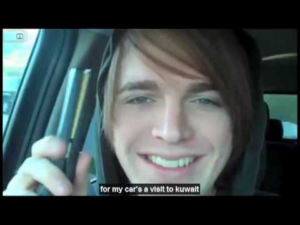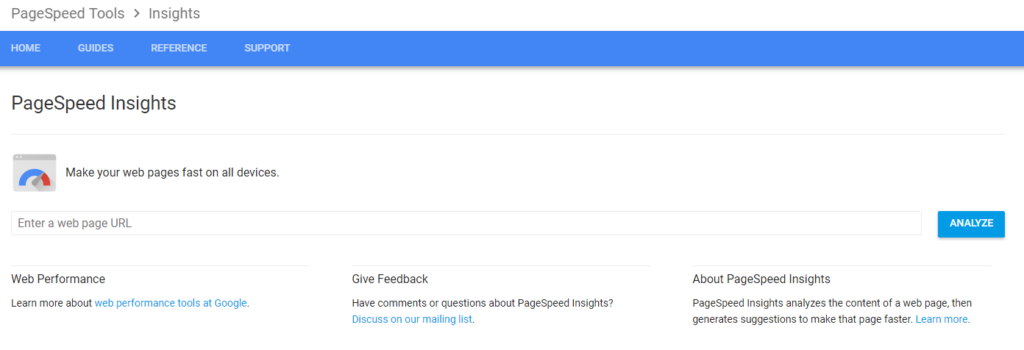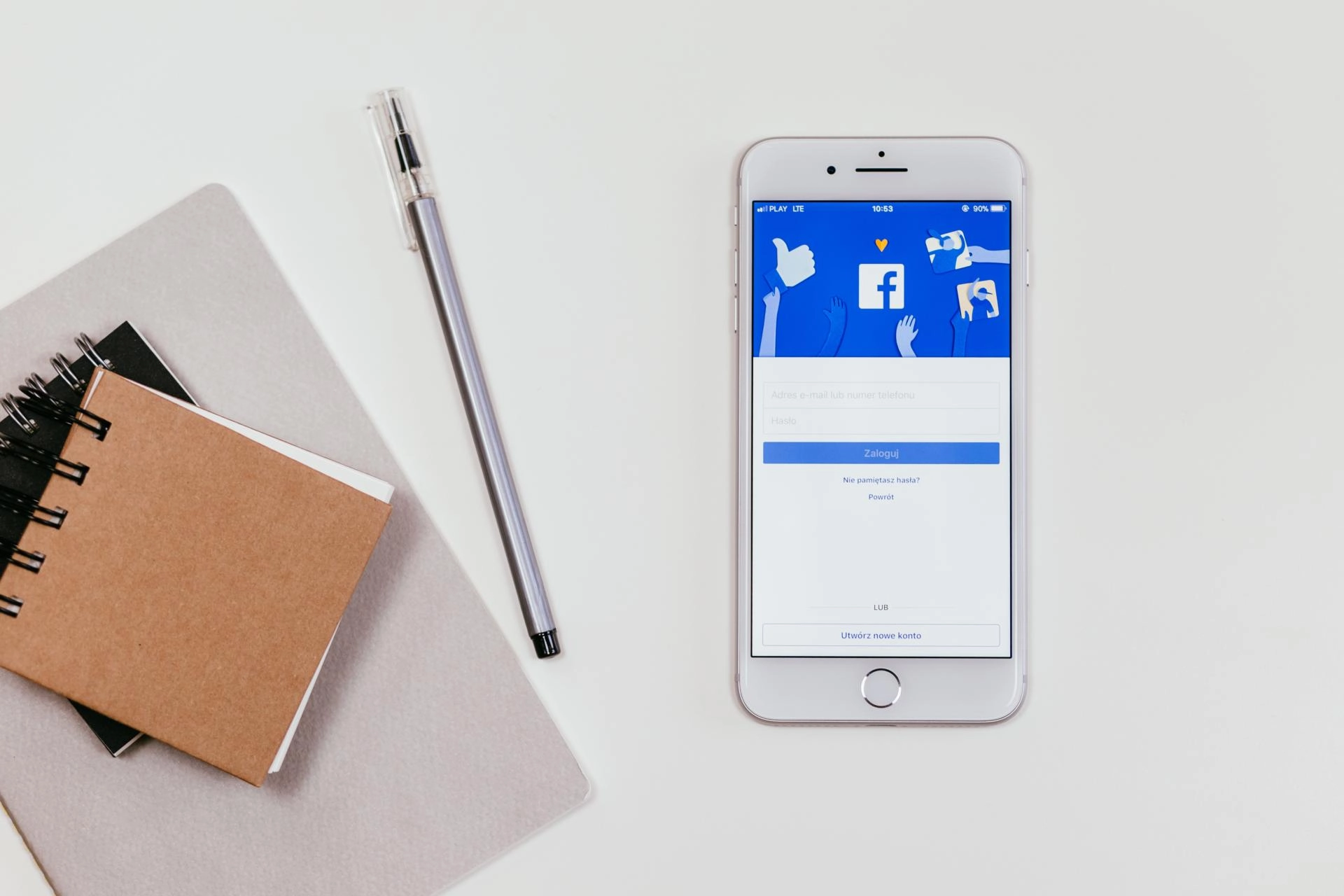In this day and age, pretty much every business owns a Facebook page. But when it comes to how these businesses manage their page and use it to market their company, that’s another story. There’s meh Facebook marketing, and there’s next level Facebook marketing.
In this article, you’ll learn all about how to supercharge your Facebook marketing to move ahead in your quest to become a Facebook aficionado and sell more online courses
Ready?
Let’s dive right in!
1. Cross-promote on Facebook and Instagram
Ever since Facebook bought Instagram back in 2012 (yup, it’s been that long!), they’ve been doing all they can to channel more people towards Instagram.
Here’s an example:
Images posted on Facebook from Instagram receive greater organic reach than those posted on Facebook alone. Mike Allton found his Facebook Post Reach increase by 7.6x when he did so.

If you’re posting images on your Facebook business page, go ahead and post them on your Instagram first, before sharing it on Facebook.

You can also automate this process, but that may not always be the best thing to do since an Instagram caption can look weird on Facebook.
2. Keep a close eye on your return on ad spend
Burning money on ads without getting a return really sucks.
It’s like tossing your money straight into the trash. Except it’s worse because you’re actually spending a lot of time and effort on your ads too, not just the money.
And if you’re not calculating it, you won’t even know all your efforts are just money down the drain. Ouch.
That’s why focusing on Return On Ad Spend (ROAS) is key, so you always know whether or not you’re driving revenue. And so you know which ads are performing really well, so you can scale them up.
How do you calculate your ROAS?
Simple. Just divide your revenue by your ad spend.
But sometimes what’s simple isn’t always easy.
Here’s a helpful example on how to calculate your ROAS for Facebook ads:
Let’s say you spend $100 on Facebook advertising for your online course, and ten people join your email newsletter. In the first month, one person buys an item for $25. In the second month, two people buy items totaling $50. In the third month, five people buy items totaling $125. In three months, you’ve generated $200 from the people who joined your email newsletter. Since you spent $100 on ads, you have generated a 200% ROAS.
Make sure your emails are personalized with merge tags. Personalized emails generate 6x higher transaction rates than cold emails alone.
When it comes to a benchmark, most advertisers want to achieve a ROAS over 300%. Since once you factor in your time commitment and gross margin, you may be losing money with a ROAS lower than that. Facebook prospecting campaigns may be considered successful with a ROAS of 250%, while Facebook retargeting or dynamic product ads (DPAs) may be considered successful at a 500%+ ROAS.
Side note: Breaking even doesn’t sound that appealing at first. But even if you only break even to acquire a lead, you now have additional customers in your email list who you can also remarket to. So even if you only broke even on the initial spend, you can still profit in the long run.
There are tons of different strategies to increase your ROAS, such as using upsell and cross-sell apps (to get a higher average order value) or beefing up your ad targeting.
First, you can download an app like Unlimited Upsell, which allows you to sell more related products based on the contents of your shopping cart. Another options is Beeketing’s Boost Sales app, which pulls in related products onto your product page and also offers last-step upsells at checkout.
Pro Tip: Make sure you have a decent amount of data (at least 100 clicks on a single ad!) before you assess your ROAS, for greater accuracy. Anything less makes it difficult to assess whether the ad is really working or not, as it doesn’t give Facebook’s algorithm time to optimize itself.
3. Start the conversation yourself on social
It’s actually pretty easy to get more engagement on your social media channels. One way is to use social media tools and social listening techniques to find conversations relevant to your brand, then chime in.
For example, if you’re a clothing retailer and you spot a conversation about what outfit to wear to a specific event, you might be able to build your brand by giving personal advice.
Related article: For tips on how to build your personal brand, check out Thinkific’s complete guide to building a personal brand for online course creators.
Alternatively, you can also ask a question in your own post, or comment with a question on your own post.
Note: You may want to start with simple opinionated questions to get the conversation flowing (e.g., what’s your favorite drink) versus more expert level questions (how do you do this work?).
Here’s how Starbucks does it:

Super simple, but super effective.
4. Optimize your Facebook page for search.
Facebook handles over 1.5 billion searches per day.
Compare that with Google’s 3.5 billion, and you can see why Facebook search is so important. It’s one of the top five search engines in the world.
If your page doesn’t show up on top, you’re missing out on potential traffic.

Here are some Facebook SEO best practices to get started with:
- Include your brand’s relevant keywords in your Facebook Page information (and make sure these appear a few times, but in a natural conversational way)
- Include relevant keywords in your Facebook posts
- Include a link to your website in the first 75 characters of your Page information
- Start working on your engagement (the more Likes, Comments and Shares you get on your posts, the better your page will do regarding Facebook SEO!)
5. Earn the “Very Responsive To Messages” Badge
Want that cool “Very Responsive To Messages” badge displayed below your cover photo?

Make sure you have a response rate of 90% and a response time of 15 minutes over the last seven days.
That’s all there is to it!
What’s the point of this badge?
It identifies you as a brand that’s easy to get in touch with…
…which makes your potential customers more likely to reach out to you (because they know you’ll probably respond quickly).
Word of Warning: This can translate to more leads and sales for you. But keep in mind that spending too much time answering every notification can pull you away from other parts of your business. To add to that, if you don’t continue this conversational marketing theme on your website, people will quickly get frustrated. You can also use Facebook Messenger Bots to improve your response and generate more sales, hire more sales reps, or automate some of your processes.
My advice? Track your sales before and after getting the badge. That way you know if the time commitment is worth it. If they don’t increase, stop doing it.
On your website, be sure to add a chatbot or live-chat that users can engage with to get answers and that you can use to qualify leads:

6. Generate leads or subscribers using freebies
People love free stuff. That’s a no-brainer!
In fact, you can use freebies and giveaways to:
- Acquire customer photos and reviews
- Do market research
- Increase engagement
- Boost conversions, and
- Grow your email list
For example, this giveaway by Fatherly was able to bring in 49,000 emails for prizes worth about $1200:

Want to see massive results like that for yourself? Use freebies or lead magnets to capture tons of traffic in your niche. With lead magnets, try one of the formats in the diagram below. According to a report by Venngage on the State of Lead Generation 2018, these formats convert the most leads to sales.

Here are a few best practices when creating your campaign:
- Ensure your prize is related to your brand (a free course enrollment for instance). This will decrease the number of entrants who are only interested in the prize (rather than actually interested in your brand).
- Focus on visuals. Your giveaway page should be colorful, clean and professional. The more professional and clean it looks, the more entrants you’ll have.
- Try giving out multiple prizes over multiple days (for multiple winners). That way, you’ll continue to drive leads even after the first giveaway.
- Pair your giveaway with a season, holiday or special event. Show your holiday spirit and align your giveaway to what people are thinking about.
7. Don’t ask for Likes, Comments or Shares
Many people will tell you to optimize your Facebook copy recommend asking for Likes, Comments or Shares.
For example:
“Doesn’t @itsdougthepug look adorable in our New Year Pug Sweater? Comment and tag a friend who loves dogs as much as we do!”
While this might have been a good marketing strategy to adopt a year or two ago, things have changed.
Following the “fake news” scandals that Facebook has encountered, the platform is now cracking down on what it calls “signals that determine whether a post might be authentic.”
And they specifically mention that pages which ask for likes, comments and shares fall into the above category.
Side note: Asking for comments like the example above may still work. However, you’re playing a risky game. If you get flagged as “fake news” or spam, you could lose out on your engagement.
8. Take advantage of audience insights
Do you know the first rule of marketing?
Know your audience.
The more you know about the people you’re interacting with and marketing to, the easier it will be to convince them to buy from you (not to mention cheaper, once you master your ad targeting and marketing copy.)
Most people don’t know exactly who their audience is. Luckily, Facebook tells you who is following your page through Audience Insights.
You can find this tool inside the Facebook Ad Manager, at the left-hand navigation.

You can use the information from your audience insights to better understand your audience.
For example, let’s say your online course business attracts women between the ages of 35-45. They also happen to be moms who love yoga and puppies.
Now you know how to associate your brand in your advertising strategy – talk about parenthood, yoga, and puppies in your status update to increase engagement. Bonus points if you can relate these things back to your online courses!
Audience insights are so powerful, they saved Codeless 70% on their cost per click, just by targeting a different, more accurate audience:

My point? Play around with Audience Insights and use that knowledge to custom tailor your ad targeting, the shareable content you post, and the way you talk with who is following you. It just might result in 70% cost savings.
9. Add captions to your videos
As much as 85% of videos viewed on Facebook are done so with their sound off.
So if your viewers can’t understand what’s going on in the video without the sound on, you’ll probably lose them.
The takeaway from this tip is simple…
If you’ve already invested all that budget into creating an awesome video, don’t let it go to waste.
Add captions to your videos and make it easier for your viewers to follow!
But be careful: video captions are extremely tricky when you try to automate them:

Consider doing them yourself if the video is short enough, and running them through a grammar tool to ensure that they are:
- Accurate
- Have high readability scores (this is key)
10. Use Facebook ads to boost your PR
This is a huge gamechanger.
Facebook ads are great at driving click-throughs and sales, but as it turns out, they can help you get backlinks and boost your PR as well.
Check it out:
Buzzsumo spent $648 on Facebook ads, advertising specifically to publishers and their employees.

This helped them get links from over 100 unique domains, including many top-tier publications.
Basically, it worked like this:
BuzzSumo created unique research that analyzed over 100 million headlines to find the best format. They did this because unique studies tend to drive backlinks better than any other kind of content, as people link to them to credit their source.
Once they had a really great piece of content, they ran highly targeted FB ads to publishers and editors from places like BuzzFeed, Refinery29, Quartz, and Mashable.
Because these people are always looking for good content to share (and especially good research), it was picked up and used by tons of the people they targeted.
The takeaway here?
Create great content on your blog, then hyper-target ads for that content to journalists, publishers, and editors.
Be sure to split test your ads based on audiences and content types. Split testing is a strategy that company Need / Want used to generate millions in sales from just a startup phase.
Bonus: Optimize your site for a smooth user experience.
So let’s say you implement a few of these tips, and you see a huge increase in traffic to your site.
What’s the next thing you should do?
Use Google’s PageSpeed Insights to optimize your site for an excellent user experience, so that you get the most out of your traffic!

Here’s why this is important:
47% of consumers expect a web page to load within 2 seconds (or less).
With every one-second delay in page response, you get a 7% reduction in conversions.
I’ve done the math for you:
Let’s say your online course site is using Facebook ads and making $200 per day. A one-second delay (which sounds pretty harmless) could potentially cost you $5,110 in lost sales every year.
A final word on killer Facebook marketing
Facebook boasts some pretty impressive metrics…
- 2 billion monthly active users
- Drives more traffic to eCommerce stores than any other social channel
- A top search engine in the world
So Facebook marketing works. It is one sure-fire way to drive customers to your online course website.
But only if you put in the work and focus on the right things.
It’s easy to do random actions on social media and waste countless hours trying to get customers. This stems from not having a written strategy.
So pick 2-3 of the tips on this list, write down your goals, and master them. Then, and only then, should you move on to the others.
Which tips are you going to implement? Why did you pick those? Let us know in the comments below!
About the author
Adam Enfroy is a writer, content marketing consultant, and manages the affiliate program for BigCommerce. With 10+ years of digital marketing experience, he’s passionate about leveraging the right strategic partnerships and software to scale digital growth. Adam lives in Austin, TX and writes about selling online courses and scaling your online influence on his blog, adamenfroy.com.





